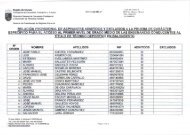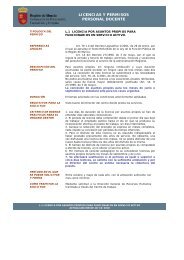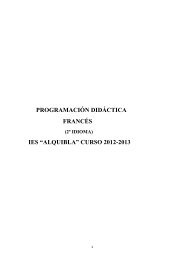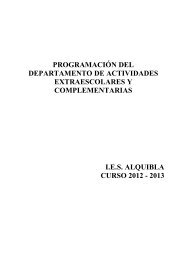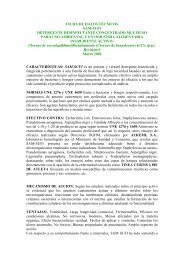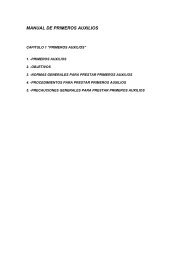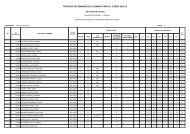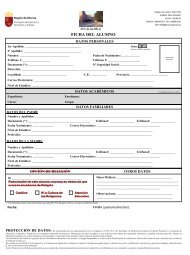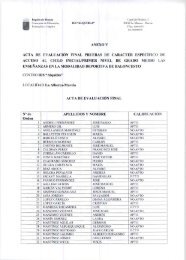Corriente eléctrica: efectos al atravesar el organismo ... - IES Alquibla
Corriente eléctrica: efectos al atravesar el organismo ... - IES Alquibla
Corriente eléctrica: efectos al atravesar el organismo ... - IES Alquibla
You also want an ePaper? Increase the reach of your titles
YUMPU automatically turns print PDFs into web optimized ePapers that Google loves.
Cuestión b):<br />
En corriente <strong>al</strong>terna<br />
Trayectoria mano derecha-pies: factor de corriente de corazón F = 0,8<br />
I ref = F x I h = 0,8 x 100 = 80 mA<br />
Interpolando en <strong>el</strong> gráfico de corriente <strong>al</strong>terna (figura 2):<br />
<br />
<br />
Umbr<strong>al</strong> de no soltar 50 ms = 0,05 segundos<br />
Umbr<strong>al</strong> de fibrilación 550 ms = 0,55 segundos<br />
En corriente continua ascendente<br />
l ref = 80 mA<br />
Interpolando en <strong>el</strong> gráfico de corriente continua (figura 3):<br />
<br />
<br />
Umbr<strong>al</strong> de no soltar 100 ms = 0, 1 segundos<br />
Umbr<strong>al</strong> de fibrilación (no se <strong>al</strong>canza)<br />
Como se puede apreciar, en este caso concreto, <strong>el</strong> umbr<strong>al</strong> de no soltarse<br />
<strong>al</strong>canza en corriente <strong>al</strong>terna en la mitad de tiempo que en corriente continua,<br />
pero aún es más significativo <strong>el</strong> umbr<strong>al</strong> de fibrilación que en corriente <strong>al</strong>terna se<br />
<strong>al</strong>canzaría en tan solo cincuenta y cinco centésimas de segundo y, sin<br />
embargo, en corriente continua no se podría <strong>al</strong>canzar.<br />
Cuestión c):<br />
Según la norma de obligado cumplimiento UNE 20.383-75 (MIE REBT-044) en<br />
su apartado 18, para un interruptor automático diferenci<strong>al</strong> de intensidad<br />
diferenci<strong>al</strong> nomin<strong>al</strong> de disparo I N 0,03 mA los tiempos de disparo deben ser:<br />
Si I = I N tiempo de disparo < 0,2 s<br />
Si I = 2 I N tiempo de disparo < 0, 1 s<br />
Si I = 10 I N tiempo de disparo < 0,04 s<br />
En nuestro caso:<br />
I = I h = 100 mA<br />
I N = 30 mA<br />
por tanto,<br />
I = (100/30) I N I = 3,3 I N<br />
luego <strong>el</strong> tiempo de disparo debe estar comprendido entre 0,04 y 0, 1 segundos;<br />
v<strong>al</strong>ores muy inferiores a los umbr<strong>al</strong>es de fibrilación ventricular.



